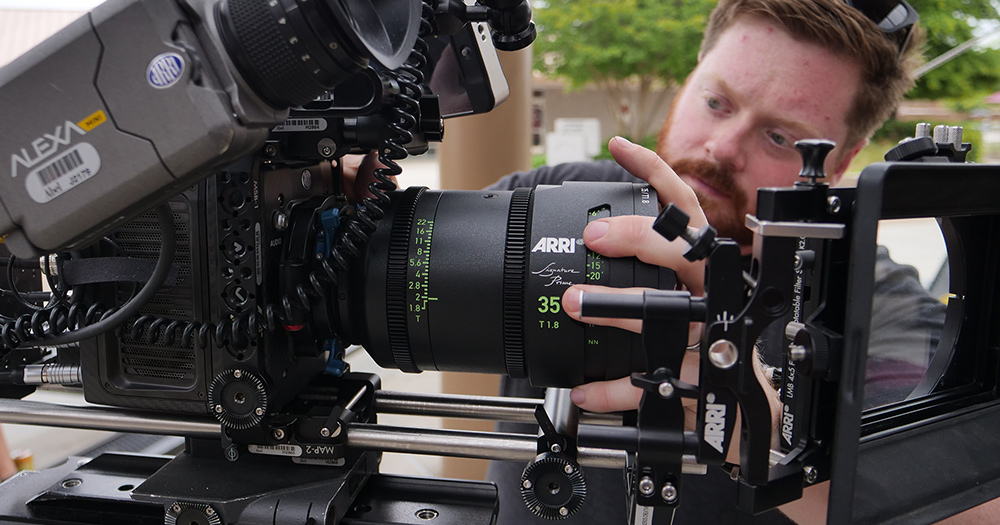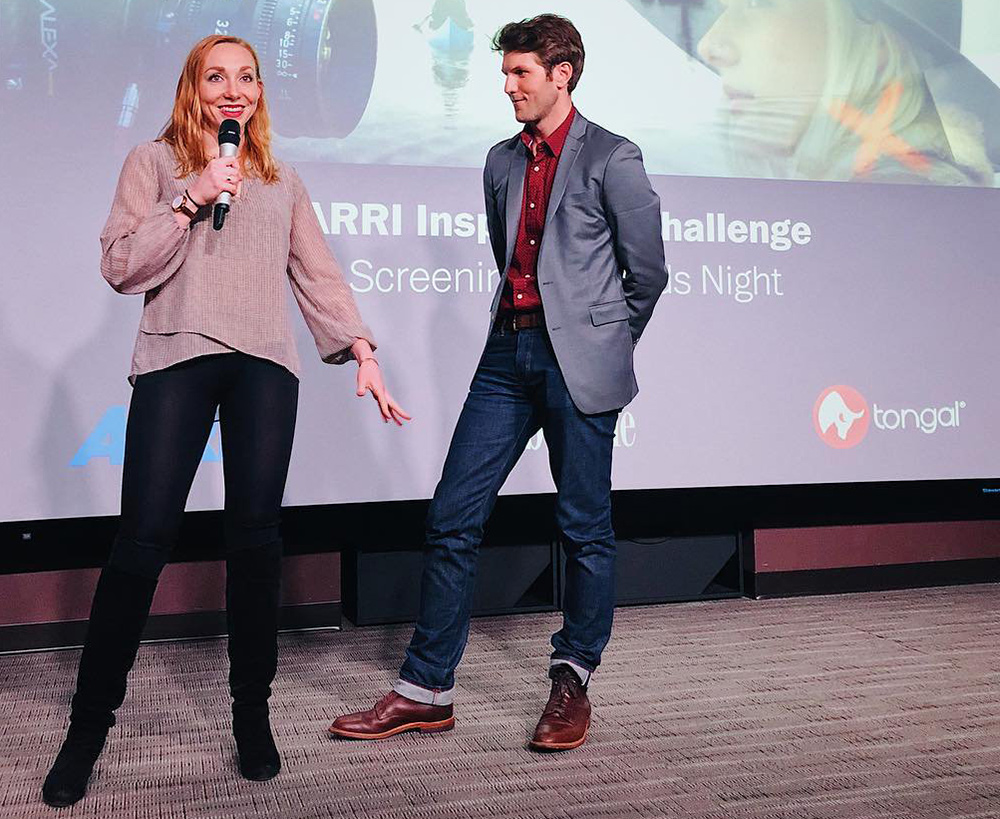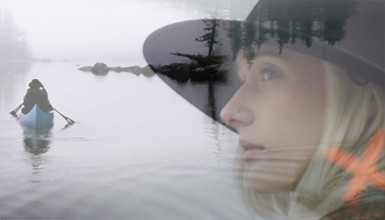Paxeros Creative, a video production company in Los Angeles, provides branded content, commercial, music video, documentary, and narrative film production services. It was co-founded by Sean Drummond, the team's producer, and Chelsea Bo, one of the directors.
Please give us some background about yourselves and how you got started in the industry?
Sean Drummond: I started making stop motion films and garage band music videos when I was in middle school in Minnesota, which progressed into a more serious passion in high school, where I won a Midwest EMMY for a distracted driving PSA. My acceptance into Loyola Marymount University’s Film & Television program brought me out to Los Angeles and supplied me with real on-set experience and knowledge about filmmaking as a craft, versus just a hobby. I was making student films during the school year and working as a Production Assistant on tentpole franchise films (Captain America: Winter Soldier, Ant-Man, Fast & Furious 8) during the summers.
Chelsea Bo: I was born and raised in LA and was surrounded by the industry my whole life. My dad and aunt are both 1st AD’s, my mom was a script supervisor, my cousin is a DP, my great-uncle is a director… I could keep going, but I think you get the point. Being on set feels like being at home. My personal passion began in high school theatre, which is where I developed my foundation for storytelling with blocking, lighting, set design, performing, music, costume design, etc. Not knowing whether to pursue my acting or directing career, I applied to both film school and theatre schools and let destiny decide which direction my career would take. I got into film school at Loyola Marymount University (LMU), and so I committed myself to production and being behind the camera.
How was Paxeros Creative formed?
Sean: Chelsea and I were collaborating all throughout our time attending LMU and eventually dipped our toes into co-directing our senior year. The idea to form an “entity” or business actually came out of a disagreement about who’s Vimeo channel to post our co-directed videos to. The formation of the company itself came after producing a few low-budget app commercials right after graduating from LMU. I was responsible for absorbing the budget of the project into my personal account, which created complications when trying to track the expenses and pay taxes. That’s when we realized we needed to form a corporation, but unfortunately, that’s not something you really learn how to do in film school.
Chelsea: Yeah, and thankfully my grandma, who’s a very involved and knowledgeable woman, introduced us to a UCLA Extension Class called “Starting your own Production Company,” which was more a legal class than anything. It was there that we learned how to properly form and run a production company.
Sean: Thus, Paxeros Creative was born!

Wake Up BTS, photo by Sean Drummond
What kind of projects does Paxeros usually work on?
Sean: For a while, the projects coming through Paxeros were just whatever directing/producing gigs we could get our hands-on. There was literally no rhyme or reason; we were just in survival mode. Since then we’ve grown and established our brand and roster of directors, each with their own approach.
Chelsea: We're really proud of the fact that our company and the directors on our roster represent a wide variety of work. Moving forward, we’d love to be more intentional about the projects we produce through Paxeros. I want our company to stand behind messages and brands that are making a positive imprint on the world, whether that is through sustainability, giving back to the community, eco-friendly, fair-trade, or just products and brands that are GOOD for us as a planet or species.
Sean: On a broader scale, we are a full-service production company for commercials, branded content, short films and docs, music videos, TV series, and as of recently, feature films – both narrative and documentary.
Chelsea: We are currently wrapping up two features (one doc and one narrative), and we have another comedy feature and a few series (scripted and unscripted) that are in development. We’re in the business of production and getting projects made, and 99% of them we’ve had a creative hand in.
For those who may not be familiar, can you give a little background on the piece you created, Cinematic Self Portraits, for the ARRI Inspiration Challenge?
Sean: The ARRI Inspiration Challenge was a contest hosted by AbelCine and ARRI, which asked filmmakers “How does ARRI inspire creativity?” Immediately, we came up with a handful of directions we could go with this project because ARRI is such an influential company in the film industry.
Chelsea: When Sean told me about this “challenge”, I knew this was an important opportunity we needed to jump on. We needed an idea that REALLY expressed how ARRI inspires creativity amongst the film community. All my best ideas come from meditation, which to me means they’re not really my ideas, they’re just given to me when I quiet my mind and listen. So, I did. I sat with the prompt and meditated for 15, maybe 30 minutes, and the message came through. What inspires an artist? How do artists portray their creative voice? Many artists use self-portraits to explore their creative identity, through literal art, or photography, or dance. How would someone in the film industry use their “tools” to craft their “cinematic self-portrait”?
From there I interviewed 5 different cinematographers and gaffers, asking them to describe their ideal self-portrait and what tools they would use. Inherently, they all wanted to use ARRI’s cameras and lights. I put this concept into a treatment and submitted it to the contest. We were one of the 3 treatments selected and given $10,000 to help make our concept a reality. From there we went and interviewed three talented and uniquely diverse cinematographers and brought their self-portraits to life! We ended up investing some personal money into the project, as well, because we knew we were investing in a very special opportunity. Luckily, it paid off!
Cinematic Self-Portraits
How did it feel when you found that you won the Grand Prize?
Chelsea: It was absolutely surreal. We flew from LA to Brooklyn for the screening and announcement of the winners and when they said our names I started shaking with excitement. I could feel myself glowing with gratitude and I had the goofiest grin that I couldn’t wipe off my face. It was quite a long process from pitching, to getting the grant, pre-production, three days of filming, and then post-production. Needless to say, there was a lot of build-up and then an enormous amount of gratitude for everyone who helped us throughout the process. Many people took low rates or worked for free and my family helped us connect with the cinematographers who also donated their time. It literally took a village and we are so grateful for the village that made this film possible. It is by far one of my favorite projects that I’ve ever directed.
Sean: It honestly felt like a dream. I came from a tech and camera background, worked at the camera rental department at LMU, and even used to want to be a cinematographer. To think that we now own an ALEXA Mini, which is consistently used for award-winning films, commercials, and TV series, is a filmmaker’s dream come true.

Chelsea and Sean accepting the Grand Prize in the ARRI Inspiration Challenge at AbelCine, March 2018.
What kind of projects have you been working on since winning the ARRI Inspiration Challenge? Are there any notable projects that you've used the ARRI ALEXA Mini on?
Sean: The type of projects we've worked on since winning have varied greatly, but there’s one common thread between all of those projects – they were all shot on our ARRI ALEXA Mini. It’s been a diverse slate of music videos, commercials, doc projects, and narrative films.
Chelsea: More specifically, we were able to produce a really special short film called Baby Kate for Jennifer Lafleur’s directorial debut. We produced a cool sci-fi short, which shot day-for-night in the desert, shot by the very talented cinematographer and color scientist, Tim Kang, who created some awesome LUTs that really sold the day-for-night look. We also produced a fun and colorful music video for Emily Rowed, with DP Megan Stacey and directed by Adrian Vieni. We were recently in the Village Roadshow Emerging Talent Lab, which allowed me to direct a proof of concept for my feature film Damage Control, which we are currently seeking financing for. Lastly, we produced a documentary about the different frontlines of mental health and suicide that are making a difference across America, directed by Nate Townsend, DP Kyle Krupinski.
Sean: Needless to say, we’ve been busy.
Emily Rowed “Pinball” Music Video
Produced by Sean Drummond and Chelsea Bo, Paxeros Creative
Based on your on-set experiences, what do you like best about using the ALEXA Mini?
Sean: Compared to the ALEXA Classic and LF, the Mini is great to use on projects of all sorts due to its smaller size. From a barebones documentary crew to full-sized union teams. It’s great to have that versatility!
Chelsea: It’s amazing because the crews we work with all love working with the Mini, from hair and makeup departments to gaffers, and of course cinematographers. They each have their own reasons for why they love the camera. And of course, we love it for all the same reasons! The natural and filmic quality, amazing retention of skin tones, the size and weight, and the sensor’s ability to retain data in low-light scenarios...
Sean: The list goes on and on, but all of these amazing qualities ultimately lead back to enhance and complement the hard work that happens behind-the-scenes of each project.
Aside from the ALEXA Mini, do you have any other go-to gear that you like to work with?
Sean: We have been using the Angenieux EZ lenses a lot on a variety of projects from commercials to documentaries to narratives. They’re versatile, fast, and cinematic! It’s a set of two zoom lenses (15-40mm + 30-90mm) that are both a T2 – they feel like primes, but with the added benefits and functionality of zooms. Not to mention, you can use them on S35 and Full Frame. I’m excited to give them a try on the Alexa Mini LF!
Honestly, outside of cameras, where we’re huge ARRI fans in general, lenses are the next thing I get the most excited about. There are quite a few lenses, other than the EZs I mentioned above, that we’ve been using recently: ARRI Signature Primes, Master Prime Anamorphics, and the standard Master Primes.
Chelsea: I feel like a dolly and a wireless follow focus are two items that I never want to live without; of course, in the indie film world those can be seen as luxuries. SkyPanels are also wonderful and extremely versatile. As far as lenses go, I love macro lenses, extremely wide lenses, and intense zoom lenses. I get a thrill from microscopic detail, seeing the whole world, and fun punch zooms.
Are there any types of projects or gear that you'd like to try out but haven't gotten a chance to yet?
Sean: Yes! In terms of gear, a Phantom high-speed camera and a precision robot camera arm are two things that come to mind immediately. They’re just so many creative things you can do with those pieces of gear, and we haven’t had an opportunity to try them out yet.
Chelsea: I recently watched an anamorphic lens comparison test, and I am very intrigued by the Hawk Anamorphics. They seem like they have the perfect amount of character. I’d definitely like to use them on my feature film! I’m also excited to see ARRI’s new Orbiter on set. I was lucky enough to direct the product launch video, and the Orbiter definitely made lighting set-ups quicker and more efficient. I’d also love more time working with a Technocrane. I haven’t been able to creatively incorporate them into my work due to budget restrictions.
ARRI Orbiter Features Video
Directed by Chelsea Bo, Produced by Sean Drummond, Paxeros Creative
Where do you draw your creative inspiration?
Chelsea: As I mentioned earlier, I turn to meditation for creative inspiration. I also love art and photography, so I find myself inspired by other artists, painters, graphic designers, portrait photography, dancers, etc. My friends and family inspire me, as well as moments in ordinary life!
Where do you see Paxeros Creative in ten years?
Chelsea: Because Paxeros’ ethos defines its identity, I envision Paxeros being the go-to company for commercials and branded content for sustainable brands and eco-friendly companies. I also see Paxeros producing uplifting, inspiring, and authentic content, giving a voice to those who may feel voiceless, or bringing happiness through comedic entertainment. I also want to have sustainable sets that follow in the footsteps of Away We Go.
I envision Paxeros being a company people want to work with because we treat our cast and crew with respect and appreciation, we practice wellness that translates into a happier work environment, we donate percentages of our profits to charities, and at the end of the day we just want to have fun. And, who doesn’t want to work with a fun production company? Good people, good content, good vibes, good times.
Sean: Ditto to everything Chelsea just said! We have lofty visions for Paxeros, but they are merely a guiding principle or a beacon far off in the distance that we’re navigating towards. It’s amazing to see the evolution of our career over the past 5 years and how a single event, project, or person can shift your trajectory, and how that can create a chain reaction of new opportunities. I have no doubt, that will continue to happen over the next 10, 20, and 50 years. To be honest, I don’t plan on ever retiring. With that being said, I imagine Paxeros thriving at the intersection of film, television, documentary, advertising, and developing the next generation’s creative voice – let’s leave it at that for now!
What advice would you give to someone just starting out in the industry?
Chelsea: I think everyone should PA at least once to get a good sense of all the jobs on set and to appreciate how important each position is in the industry. You learn A LOT as a production assistant. Then, whatever job that person is aspiring to do (direct, produce, production design, etc.) find a way to keep doing whatever that job is, no matter the level, just keep doing it. Every project you work on, you learn from, but there’s no way to get better unless you keep practicing. So just do it. Make it a priority. There isn’t one specific way to succeed in this industry, know that whatever path you create, is the right one. Also, it takes a village to make a movie, documentary, or commercial, and every single person in that village is incredibly important – cultivate your village and appreciate them.
Sean: Yes, form your village and find ways to rise together. In film school, it seems like everyone wants to be a director or cinematographer, but I would urge people to explore other positions as soon as possible to discover where their strengths and passions lay, then build upon those skills. No matter what, find what you love to do and keep doing that – become an expert at that. Keep doing what you love, no matter the level, and when your talent is discovered, you will get paid to do what you love. That hard work will pay off.
To learn more visit paxeroscreative.com and follow them on YouTube, Instagram, and Facebook.
Responses have been lightly edited for space and clarity.
Banner image: Emily Rowed BTS, photo by Sean Drummond.




















AbelCine encourages comments on our blog posts, as long as they are relevant and respectful in tone. To further professional dialog, we strongly encourage the use of real names. We reserve the right to remove any comments that violate our comment policy.
AbelCine publishes this blog as a free educational resource, and anyone may read the discussions posted here. However, if you want to join the conversation, please log in or register on our site.
We use Disqus to manage comments on this blog. If you already have a Disqus account registered under the same email as your AbelCine account, you will automatically be logged in when you sign in to our site. If not, please create a free account with Disqus using the same email as your AbelCine account.